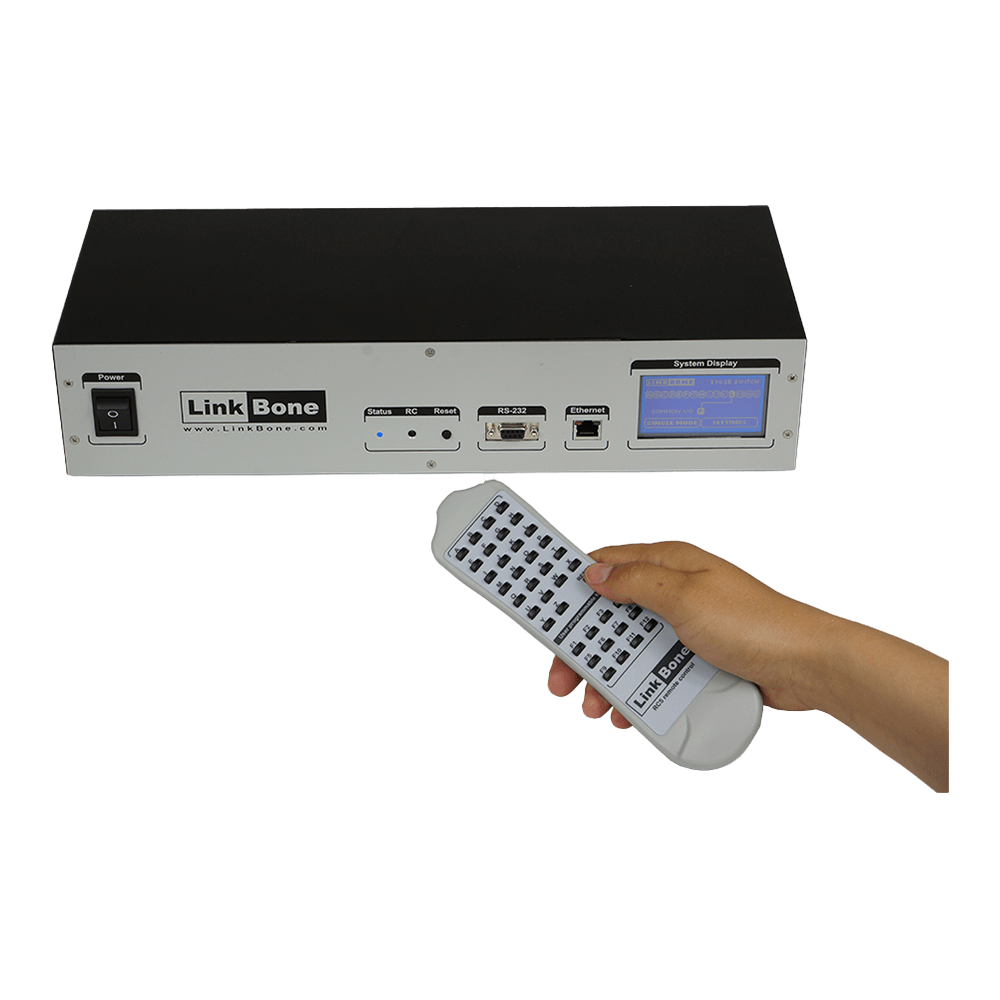
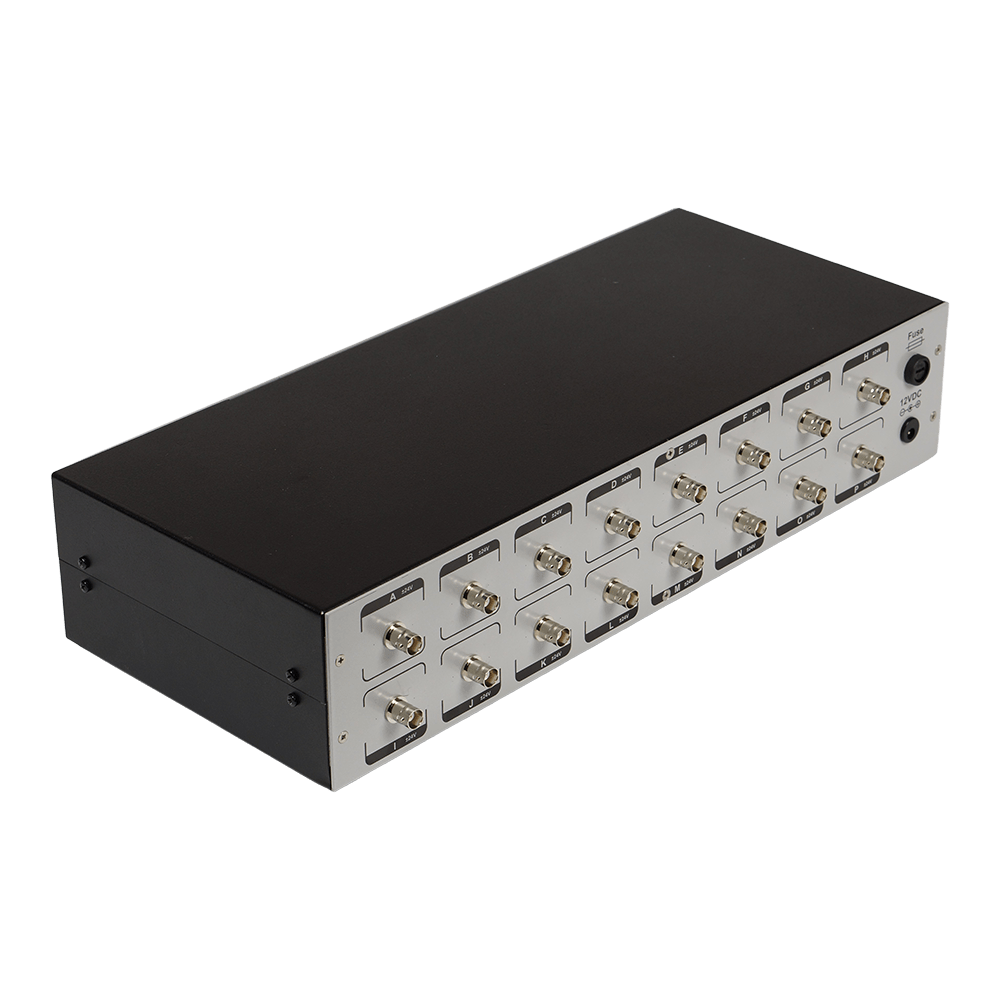
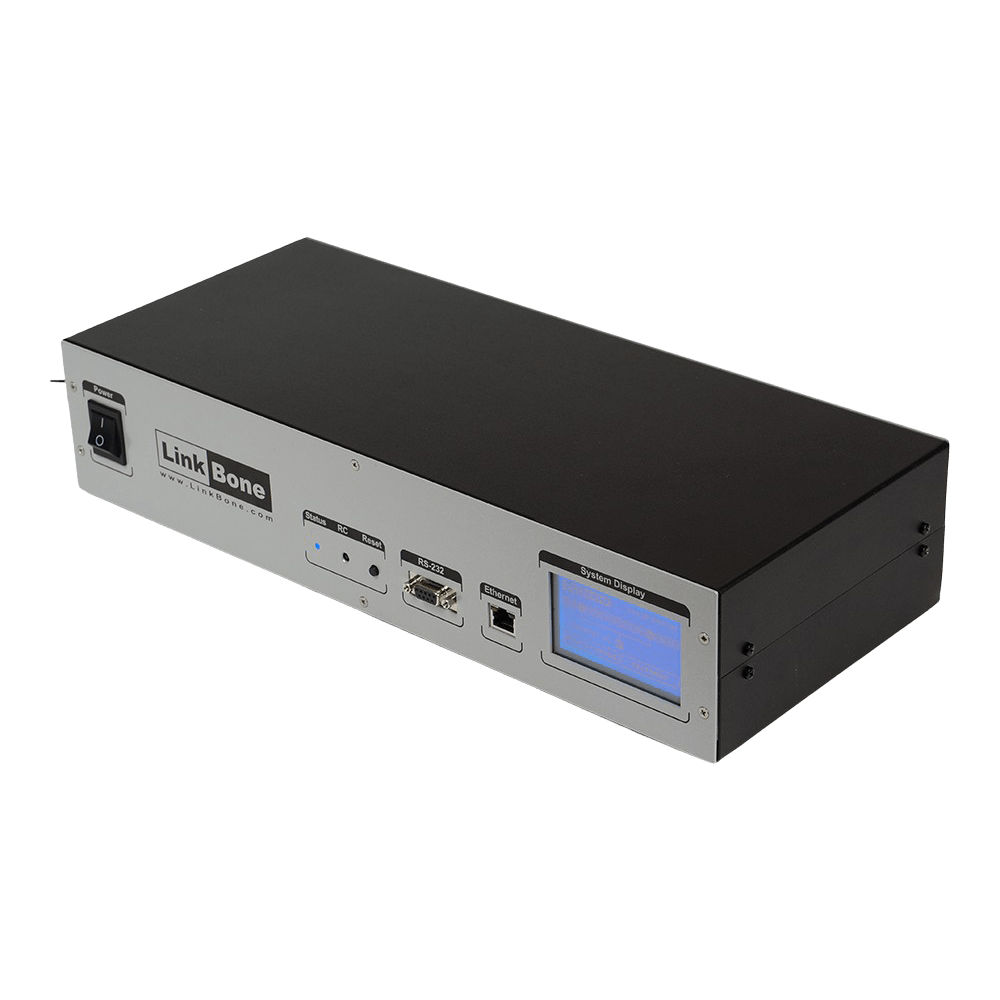
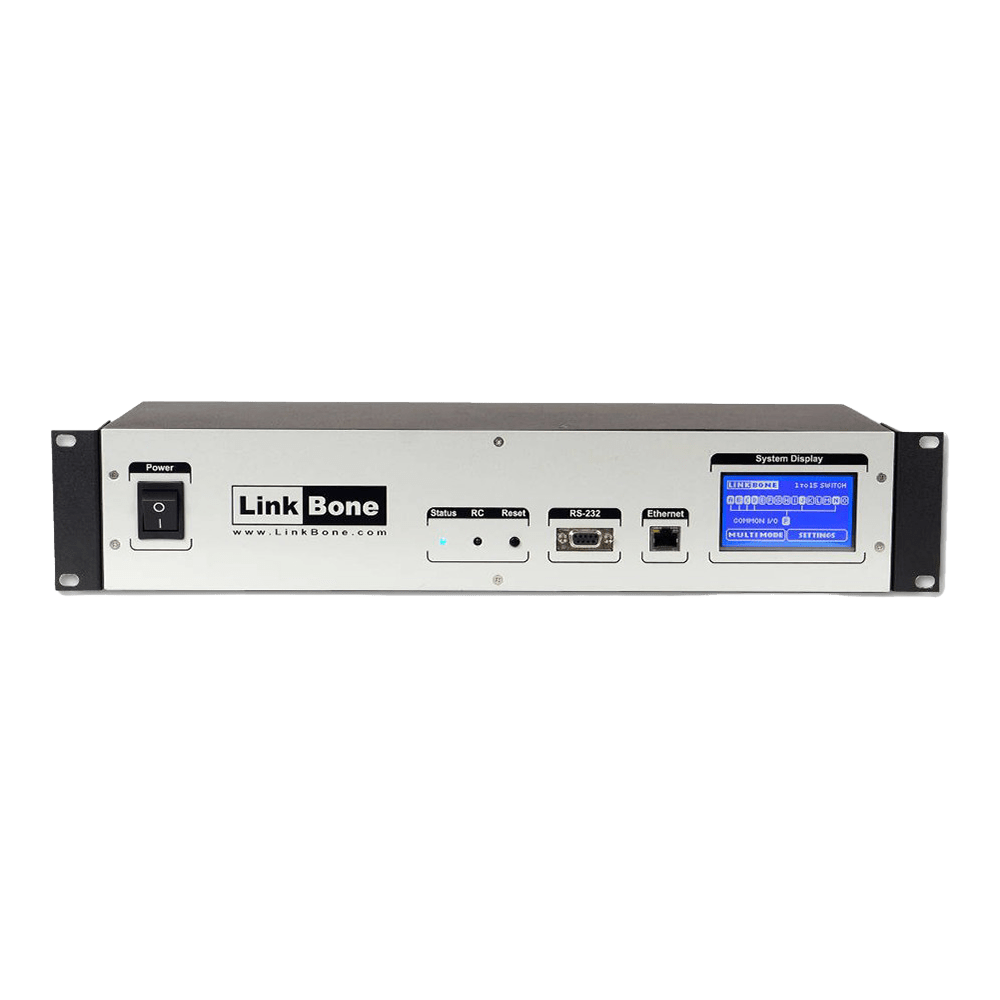
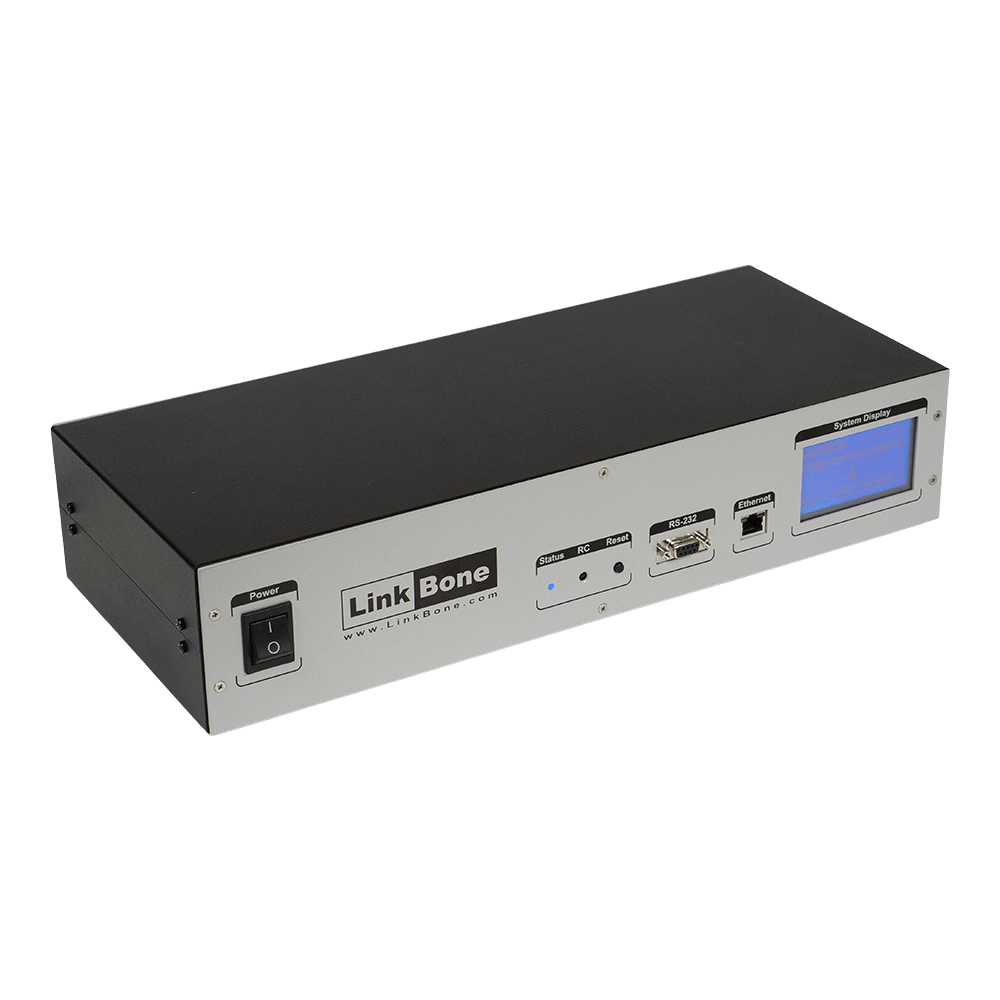
Key Features
Overview
The LinkBone 15-Way BNC Switch transforms signal routing in test automation environments by providing bidirectional switching between a common port and fifteen individual channels. Built for professional applications, this device supports both analog and digital signals across a DC to 50MHz bandwidth with excellent signal integrity.
Each port switch state operates independently, allowing flexible configuration as either a traditional 1-to-15 multiplexer or supporting multiple simultaneous connections. The device handles demanding electrical requirements with ±24V voltage capability and 1.5A current rating per port, making it suitable for diverse test scenarios from video and audio to complex high-amplitude signals.
Three control interfaces provide operational flexibility: built-in Ethernet web server for remote management, RS-232 serial for PLC integration, and RC5 infrared remote for manual operation. The 19-inch rack mounting system ensures professional installation compatibility. Related products include the LinkBone Dual 15-Way BNC Multiplexer for applications requiring parallel signal paths.
Downloads
Why Engineers Choose The LinkBone 15-Way BNC Switch - Remote Signal Routing for Test Automation
Multi-Point Testing
Test Automation
Signal Integrity
Professional Signal Switching for Test Automation
The LinkBone 15-Way BNC Switch delivers versatile analog and digital signal routing capabilities for demanding test and measurement applications. This rack-mountable multiplexer provides precise signal switching between a common port and fifteen individual ports, enabling efficient test automation workflows.
Operating Modes
Single-Mode Operation
In single-mode, only one of the A to O ports can simultaneously connect to the common port P, functioning as a classic analog multiplexer/demultiplexer. This ensures signal isolation and prevents crosstalk between channels.
Multi-Mode Operation
Multi-mode removes connection limits, allowing multiple ports to connect to port P simultaneously. This flexibility supports complex test scenarios requiring parallel signal routing.
Control Options
Wiring Quick-Start
The P port serves as the common connection point. Connect your signal source or measurement instrument to port P, then route test signals through any of the fifteen A-O ports.
| Connection Type | Pin Assignment | Function |
|---|---|---|
| BNC Centre Pin | Signal | Carries analog/digital signals bidirectionally |
| BNC Shield | Ground | Provides signal return path and shielding |
Technical Specifications
| Parameter | Specification |
|---|---|
| Bandwidth | DC to 50MHz |
| Voltage Range | ±24V |
| Current Rating | 1.5A per port |
| Impedance | 50Ω |
| Switching Life | 100 million cycles |
Professional Applications
Ideal for oscilloscope multi-point testing, signal generator routing, automated production testing, and laboratory measurement systems requiring reliable signal switching.
Frequently Asked Questions
Have a Question?
-
What mounting options are available?
The device includes 19-inch rack mounting profiles and screws for standard equipment rack installation. It can also be used as a benchtop unit with the included rubber feet for desktop placement.
-
How is the device powered?
The switch operates from a 12V DC external power supply with EU/UK/US/AU plug (included). Power consumption is low, making it suitable for continuous operation in test systems.
-
What's the expected switching life of the relays?
The internal switching elements are rated for over 100 million switching cycles, ensuring long-term reliability in production test environments and laboratory applications.
-
Can multiple ports be active simultaneously?
In multi-mode operation, yes. You can configure multiple A-O ports to connect to the common port P at the same time, enabling signal distribution or parallel testing scenarios.
-
What connectors does the device use?
All signal connections use standard BNC connectors with 50Ω impedance. The centre conductor carries the signal while the shield provides the ground return path and RF shielding.
-
How do I integrate this with automated test equipment?
Use the RS-232 serial interface for direct connection to PLCs and test controllers, or the Ethernet interface for network-based control. The device accepts standard command protocols for easy integration into test sequences.
-
Is the signal routing bidirectional?
Yes, all signal routing is bidirectional. You can connect signal sources to port P and route to A-O ports, or connect sources to A-O ports and route to port P as needed for your application.
-
What types of signals can the switch handle?
The switch supports both analog and digital signals across a DC to 50MHz bandwidth, including video, audio, clock signals, and complex waveforms. It handles voltages up to ±24V with 1.5A current capacity per port.
-
Can I control the switch remotely over a network?
Yes, the built-in Ethernet interface provides both HTTP web server control and Telnet command interface. You can control switch positions from anywhere on your network or via the internet through the integrated web server.
-
What's the difference between single-mode and multi-mode operation?
Single-mode allows only one A-O port to connect to the common port P at a time, operating as a traditional multiplexer. Multi-mode removes this limitation, allowing multiple ports to connect to P simultaneously for parallel signal routing applications.





